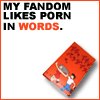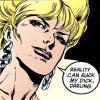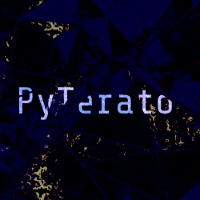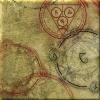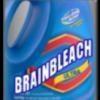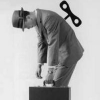-
Posts
11,251 -
Joined
-
Last visited
-
Days Won
149
Reputation Activity
-
 Melrick reacted to JayDee in The Art of Foreshadowing
Melrick reacted to JayDee in The Art of Foreshadowing
If you’ve been carefully following Melrick’s posts you’ll have been able to work out this guide was coming for some time.
-
 Melrick got a reaction from pippychick in Creating characters
Melrick got a reaction from pippychick in Creating characters
I’m glad people like these! I’m just wondering if I should move them to the “Unofficial Guides” section of the Writer’s Corner.
-
 Melrick got a reaction from BronxWench in Creating characters
Melrick got a reaction from BronxWench in Creating characters
I’m glad people like these! I’m just wondering if I should move them to the “Unofficial Guides” section of the Writer’s Corner.
-

-
 Melrick reacted to pippychick in Creating characters
Melrick reacted to pippychick in Creating characters
Melrick, I am loving all these little snippets you are posting – they’re fantastic!
-
 Melrick got a reaction from Cuzosu in Creating characters
Melrick got a reaction from Cuzosu in Creating characters
Creating Characters
Have you ever heard of the term, “Mary-Sue”, in relation to stories? If you don’t know what that is then I’ll explain. A “Mary-Sue” story is where the hero of the story is basically you. But not exactly like you, though; a better looking, stronger, braver, more popular, richer you, with super powers! These type of stories are usually pretty obvious, and often draw a lot of flack from people. Mary-Sue’s are not popular, other than with the person that wrote it.
But I’m going to go against popular opinion somewhat and say that Mary-Sue’s aren’t all bad. If you’re starting out in the big scary world of story writing then a Mary-Sue type story is almost certainly one of the first types you’re going to write. And that’s okay, it truly is! You’re still learning, and the only way to learn is to write, make mistakes, learn from them, keep writing, make mistakes, etc. So go on, write those Mary-Sue’s, but perhaps you should just keep them to yourself, or maybe only show them to select friends. But you really should be striving towards writing non Mary-Sue stories as soon as you can.
But don’t let anybody tell you that published author’s never base characters on themselves, because they very much do. They always have, and they continue to do so. Most successful authors have written novels containing characters that are them to varying degrees. The lead characters in some of the most successful novels have been a carbon copy of the author. But that’s the whole point: the character is just like the author, and nobody is perfect. Every single human being has flaws. And it’s their flaws that makes a character interesting, not their perfections.
When people write Mary-Sue’s, what they’re really wanting to see is them as the kind of person they wished they were, so they make them gloriously perfect. Because don’t most of us wish we were perfect? I know I do. But that makes for boring reading for everyone other than the person who wrote it. People can’t relate to perfect characters, because we’re not perfect. People can relate to flawed characters, though, because we ourselves are flawed. But that’s why we like to see the flawed hero triumph, because we can put ourselves in their shoes, and we cheer them on, wanting them to succeed against the odds!
You can go overboard with the flaws, though. Unless you really want your character to be thoroughly broken then don’t forget to give them some positives. A character that is so utterly damaged can be difficult for most people to warm to, which is a potential problem if this person is going to be the hero of your story. Those kind of characters can work, though, but usually only if they find some kind of redemption at or near the climax of the story. Still, if they’re thoroughly unlikeable then the journey to that point can be a tough one for your readers.
But what about your hero’s friends? What are they like? The temptation for some is to follow what we see in movies and TV series: one friend is black, one friend is gay and one friend is Asian. This sort of political correctness has no part in stories! Take a look at your own circle of friends? Is that really what they look like? Do you actually know anybody who genuinely has a circle of friends like that? Don’t get me wrong, if your character is white then I’m not saying they can’t have any black friends, gay friends or Asian friends. Sure they can! But unless a person lives in a highly multicultural and diverse neighbourhood then it’s extremely unlikely that a person will have that exact make-up of friends.
Another temptation is to follow a different type of movie or TV series, which is where each friend is wildly different than the other friends. Opposites attract only in bad fiction. In reality, opposites tend to get on each other’s tits after a while. Again, think about your own friends. Do you have friends who are all totally different from each other, as in nobody has anything in common? I highly doubt it. Maybe you might have one weird friend who is quite different from you, but there’ll still be at least some things about this person that you like, otherwise they wouldn’t be a friend, now would they. Make the friends realistic, not politically correct.
What about the villain of your story? Unless you’re writing a super hero or anime-based story, then your bad guy shouldn’t be a cartoon-style super villain, not if you want them to be believable. Just as you want the hero of your story to be someone the reader can warm to, the villain should have the opposite effect on the reader. You really don’t want people to be cheering on the bad guy, unless that really is the type of story you’re going for. Exactly how bad the person is really depends on what type of story and character you’re writing. Is the bad guy you’re garden variety bully and thug, or is he a psychopathic murderer? If he’s just a thug then you don’t want to go overboard and inadvertently turn him into a small town super villain. While you don’t want your audience cheering on the bad guy, you do want the readers to find them believable. If they’re too unbelievable then the reader can start to loose connection with your story.
Creating realistic, believable, relatable characters shouldn’t be so difficult. All you really need to do is to take a look at yourself and your friends. If you’re having a hard time warming to your character then so will everybody else.
-
 Melrick got a reaction from BronxWench in Creating characters
Melrick got a reaction from BronxWench in Creating characters
Creating Characters
Have you ever heard of the term, “Mary-Sue”, in relation to stories? If you don’t know what that is then I’ll explain. A “Mary-Sue” story is where the hero of the story is basically you. But not exactly like you, though; a better looking, stronger, braver, more popular, richer you, with super powers! These type of stories are usually pretty obvious, and often draw a lot of flack from people. Mary-Sue’s are not popular, other than with the person that wrote it.
But I’m going to go against popular opinion somewhat and say that Mary-Sue’s aren’t all bad. If you’re starting out in the big scary world of story writing then a Mary-Sue type story is almost certainly one of the first types you’re going to write. And that’s okay, it truly is! You’re still learning, and the only way to learn is to write, make mistakes, learn from them, keep writing, make mistakes, etc. So go on, write those Mary-Sue’s, but perhaps you should just keep them to yourself, or maybe only show them to select friends. But you really should be striving towards writing non Mary-Sue stories as soon as you can.
But don’t let anybody tell you that published author’s never base characters on themselves, because they very much do. They always have, and they continue to do so. Most successful authors have written novels containing characters that are them to varying degrees. The lead characters in some of the most successful novels have been a carbon copy of the author. But that’s the whole point: the character is just like the author, and nobody is perfect. Every single human being has flaws. And it’s their flaws that makes a character interesting, not their perfections.
When people write Mary-Sue’s, what they’re really wanting to see is them as the kind of person they wished they were, so they make them gloriously perfect. Because don’t most of us wish we were perfect? I know I do. But that makes for boring reading for everyone other than the person who wrote it. People can’t relate to perfect characters, because we’re not perfect. People can relate to flawed characters, though, because we ourselves are flawed. But that’s why we like to see the flawed hero triumph, because we can put ourselves in their shoes, and we cheer them on, wanting them to succeed against the odds!
You can go overboard with the flaws, though. Unless you really want your character to be thoroughly broken then don’t forget to give them some positives. A character that is so utterly damaged can be difficult for most people to warm to, which is a potential problem if this person is going to be the hero of your story. Those kind of characters can work, though, but usually only if they find some kind of redemption at or near the climax of the story. Still, if they’re thoroughly unlikeable then the journey to that point can be a tough one for your readers.
But what about your hero’s friends? What are they like? The temptation for some is to follow what we see in movies and TV series: one friend is black, one friend is gay and one friend is Asian. This sort of political correctness has no part in stories! Take a look at your own circle of friends? Is that really what they look like? Do you actually know anybody who genuinely has a circle of friends like that? Don’t get me wrong, if your character is white then I’m not saying they can’t have any black friends, gay friends or Asian friends. Sure they can! But unless a person lives in a highly multicultural and diverse neighbourhood then it’s extremely unlikely that a person will have that exact make-up of friends.
Another temptation is to follow a different type of movie or TV series, which is where each friend is wildly different than the other friends. Opposites attract only in bad fiction. In reality, opposites tend to get on each other’s tits after a while. Again, think about your own friends. Do you have friends who are all totally different from each other, as in nobody has anything in common? I highly doubt it. Maybe you might have one weird friend who is quite different from you, but there’ll still be at least some things about this person that you like, otherwise they wouldn’t be a friend, now would they. Make the friends realistic, not politically correct.
What about the villain of your story? Unless you’re writing a super hero or anime-based story, then your bad guy shouldn’t be a cartoon-style super villain, not if you want them to be believable. Just as you want the hero of your story to be someone the reader can warm to, the villain should have the opposite effect on the reader. You really don’t want people to be cheering on the bad guy, unless that really is the type of story you’re going for. Exactly how bad the person is really depends on what type of story and character you’re writing. Is the bad guy you’re garden variety bully and thug, or is he a psychopathic murderer? If he’s just a thug then you don’t want to go overboard and inadvertently turn him into a small town super villain. While you don’t want your audience cheering on the bad guy, you do want the readers to find them believable. If they’re too unbelievable then the reader can start to loose connection with your story.
Creating realistic, believable, relatable characters shouldn’t be so difficult. All you really need to do is to take a look at yourself and your friends. If you’re having a hard time warming to your character then so will everybody else.
-
 Melrick got a reaction from JayDee in Creating characters
Melrick got a reaction from JayDee in Creating characters
Creating Characters
Have you ever heard of the term, “Mary-Sue”, in relation to stories? If you don’t know what that is then I’ll explain. A “Mary-Sue” story is where the hero of the story is basically you. But not exactly like you, though; a better looking, stronger, braver, more popular, richer you, with super powers! These type of stories are usually pretty obvious, and often draw a lot of flack from people. Mary-Sue’s are not popular, other than with the person that wrote it.
But I’m going to go against popular opinion somewhat and say that Mary-Sue’s aren’t all bad. If you’re starting out in the big scary world of story writing then a Mary-Sue type story is almost certainly one of the first types you’re going to write. And that’s okay, it truly is! You’re still learning, and the only way to learn is to write, make mistakes, learn from them, keep writing, make mistakes, etc. So go on, write those Mary-Sue’s, but perhaps you should just keep them to yourself, or maybe only show them to select friends. But you really should be striving towards writing non Mary-Sue stories as soon as you can.
But don’t let anybody tell you that published author’s never base characters on themselves, because they very much do. They always have, and they continue to do so. Most successful authors have written novels containing characters that are them to varying degrees. The lead characters in some of the most successful novels have been a carbon copy of the author. But that’s the whole point: the character is just like the author, and nobody is perfect. Every single human being has flaws. And it’s their flaws that makes a character interesting, not their perfections.
When people write Mary-Sue’s, what they’re really wanting to see is them as the kind of person they wished they were, so they make them gloriously perfect. Because don’t most of us wish we were perfect? I know I do. But that makes for boring reading for everyone other than the person who wrote it. People can’t relate to perfect characters, because we’re not perfect. People can relate to flawed characters, though, because we ourselves are flawed. But that’s why we like to see the flawed hero triumph, because we can put ourselves in their shoes, and we cheer them on, wanting them to succeed against the odds!
You can go overboard with the flaws, though. Unless you really want your character to be thoroughly broken then don’t forget to give them some positives. A character that is so utterly damaged can be difficult for most people to warm to, which is a potential problem if this person is going to be the hero of your story. Those kind of characters can work, though, but usually only if they find some kind of redemption at or near the climax of the story. Still, if they’re thoroughly unlikeable then the journey to that point can be a tough one for your readers.
But what about your hero’s friends? What are they like? The temptation for some is to follow what we see in movies and TV series: one friend is black, one friend is gay and one friend is Asian. This sort of political correctness has no part in stories! Take a look at your own circle of friends? Is that really what they look like? Do you actually know anybody who genuinely has a circle of friends like that? Don’t get me wrong, if your character is white then I’m not saying they can’t have any black friends, gay friends or Asian friends. Sure they can! But unless a person lives in a highly multicultural and diverse neighbourhood then it’s extremely unlikely that a person will have that exact make-up of friends.
Another temptation is to follow a different type of movie or TV series, which is where each friend is wildly different than the other friends. Opposites attract only in bad fiction. In reality, opposites tend to get on each other’s tits after a while. Again, think about your own friends. Do you have friends who are all totally different from each other, as in nobody has anything in common? I highly doubt it. Maybe you might have one weird friend who is quite different from you, but there’ll still be at least some things about this person that you like, otherwise they wouldn’t be a friend, now would they. Make the friends realistic, not politically correct.
What about the villain of your story? Unless you’re writing a super hero or anime-based story, then your bad guy shouldn’t be a cartoon-style super villain, not if you want them to be believable. Just as you want the hero of your story to be someone the reader can warm to, the villain should have the opposite effect on the reader. You really don’t want people to be cheering on the bad guy, unless that really is the type of story you’re going for. Exactly how bad the person is really depends on what type of story and character you’re writing. Is the bad guy you’re garden variety bully and thug, or is he a psychopathic murderer? If he’s just a thug then you don’t want to go overboard and inadvertently turn him into a small town super villain. While you don’t want your audience cheering on the bad guy, you do want the readers to find them believable. If they’re too unbelievable then the reader can start to loose connection with your story.
Creating realistic, believable, relatable characters shouldn’t be so difficult. All you really need to do is to take a look at yourself and your friends. If you’re having a hard time warming to your character then so will everybody else.
-
 Melrick got a reaction from Wilde_Guess in The Art of Foreshadowing
Melrick got a reaction from Wilde_Guess in The Art of Foreshadowing
The Art of Foreshadowing
What is it?
Quite simply, foreshadowing is to hint at something, in a casual way, where it will be brought up again later on in the story in a more significant and relevant way. The ‘art’ is in exactly how you lay that little hint, without telegraphing “THIS IS IMPORTANT! REMEMBER IT!”.
Why it’s important
Story telling is easy. No, really, it is! The art is in how you tell the story, that’s what makes it scary, exciting, sexy, etc. Foreshadowing is a very important tool to use in many, if not most, stories. I’m sure most of us have watched movies where all of a sudden, the hero just happens to find the one thing he or she needs to save the day. “Oh that was convenient!” we shout at the screen. It’s far too convenient, and therefore, annoying, for the hero of your story to miraculously find exactly the right thing he or she needs right when they need it the most. This is the reaction you’ll get for unrealistic and unbelievable story telling. What you need to do is to leave a little hint earlier in the story, something that, at the time, didn’t seem all that relevant or important to the story, but allows the reader to later say, “Oh, so that’s why the author did that!”
Foreshadowing is more important in some stories than others. Detective mysteries rely very heavily on foreshadowing. Everyone reading the story is hoping to guess who the killer is before the detective, and a well written story should provide enough hints to allow the reader to do this, if only they work out what’s important and what’s a red herring. There’s nothing worse than coming to the conclusion and realising that the detective was apparently privy to information that we, the reader, were not. This is bitterly frustrating and poor story telling. When the detective goes through the steps that allowed him or her to catch the killer, everything there should be something that the reader could also have picked up on. Nothing should be a clue that we hadn’t been exposed to in some way.
As suggested above, you can also use foreshadowing to misdirect the reader, by laying a hint that you know the reader will think is important but is actually a red herring. You would then follow it up a little later with another hint – the true one, this time – but because the reader has thought the earlier hint was the real one, they might be tempted to overlook the true one. I think you’d need to be a little careful with how you do this, because it can backfire if done poorly. If done right, though, then it can be a clever way to get the reader to watch your left hand while your right pulls the card out of your sleeve. On the other hand, some stories, like detective stories, rely very heavily on leaving plenty of clues and red herrings, creating a pretty tangled web that needs to be weaved with great care. This is why a good detective story can be so difficult to write. Huge respect to Agatha Christie!
How and when to foreshadow
More often than not, foreshadowing should be of the fairly subtle kind. If it’s shouted from the rooftops then it can cause the reader to keep a close eye out for it, so when it happens, it’s of no surprise at all to the reader, and, frankly, spoils the story. A better way is to drop the hint in such a way as to cause the reader to either all but forget about it, or to make the reader think that your hint was just a bit of flavouring, and nothing more important than that.
You can go overboard with foreshadowing though. If everything in your story is important, then the reader soon learns to understand that everything you mention is going to have something relevant to do with the climax of your story, which only helps to lessen the impact. By adding things to your story that aren’t important, it ensures the reader is never sure what’s important and what’s not. On the other hand, when you later proofread your story, you might actually see how you could turn one of these story flavour enhancers into an actual foreshadow. But as I said, these ‘story flavour enhancers’ should rarely be promoted as “THIS IS IMPORTANT” moments. Describing how the ashtray on the coffee table is overflowing with ash and cigarette butts might just be a way to simply show that the occupant is a smoker and a bit messy or lazy, or it might have important relevance later on. Who knows? Certainly not the reader, and that’s what’s most important.
Remember, foreshadowing should very rarely be obvious. It should be a fairly subtle hint that the reader may or may not pick up on. Too overt a hint comes across as too obvious and too forced. It needs to flow naturally with the story, appearing as something that is nothing more than a flavour enhancer.
-
 Melrick got a reaction from Cuzosu in The Art of Foreshadowing
Melrick got a reaction from Cuzosu in The Art of Foreshadowing
The Art of Foreshadowing
What is it?
Quite simply, foreshadowing is to hint at something, in a casual way, where it will be brought up again later on in the story in a more significant and relevant way. The ‘art’ is in exactly how you lay that little hint, without telegraphing “THIS IS IMPORTANT! REMEMBER IT!”.
Why it’s important
Story telling is easy. No, really, it is! The art is in how you tell the story, that’s what makes it scary, exciting, sexy, etc. Foreshadowing is a very important tool to use in many, if not most, stories. I’m sure most of us have watched movies where all of a sudden, the hero just happens to find the one thing he or she needs to save the day. “Oh that was convenient!” we shout at the screen. It’s far too convenient, and therefore, annoying, for the hero of your story to miraculously find exactly the right thing he or she needs right when they need it the most. This is the reaction you’ll get for unrealistic and unbelievable story telling. What you need to do is to leave a little hint earlier in the story, something that, at the time, didn’t seem all that relevant or important to the story, but allows the reader to later say, “Oh, so that’s why the author did that!”
Foreshadowing is more important in some stories than others. Detective mysteries rely very heavily on foreshadowing. Everyone reading the story is hoping to guess who the killer is before the detective, and a well written story should provide enough hints to allow the reader to do this, if only they work out what’s important and what’s a red herring. There’s nothing worse than coming to the conclusion and realising that the detective was apparently privy to information that we, the reader, were not. This is bitterly frustrating and poor story telling. When the detective goes through the steps that allowed him or her to catch the killer, everything there should be something that the reader could also have picked up on. Nothing should be a clue that we hadn’t been exposed to in some way.
As suggested above, you can also use foreshadowing to misdirect the reader, by laying a hint that you know the reader will think is important but is actually a red herring. You would then follow it up a little later with another hint – the true one, this time – but because the reader has thought the earlier hint was the real one, they might be tempted to overlook the true one. I think you’d need to be a little careful with how you do this, because it can backfire if done poorly. If done right, though, then it can be a clever way to get the reader to watch your left hand while your right pulls the card out of your sleeve. On the other hand, some stories, like detective stories, rely very heavily on leaving plenty of clues and red herrings, creating a pretty tangled web that needs to be weaved with great care. This is why a good detective story can be so difficult to write. Huge respect to Agatha Christie!
How and when to foreshadow
More often than not, foreshadowing should be of the fairly subtle kind. If it’s shouted from the rooftops then it can cause the reader to keep a close eye out for it, so when it happens, it’s of no surprise at all to the reader, and, frankly, spoils the story. A better way is to drop the hint in such a way as to cause the reader to either all but forget about it, or to make the reader think that your hint was just a bit of flavouring, and nothing more important than that.
You can go overboard with foreshadowing though. If everything in your story is important, then the reader soon learns to understand that everything you mention is going to have something relevant to do with the climax of your story, which only helps to lessen the impact. By adding things to your story that aren’t important, it ensures the reader is never sure what’s important and what’s not. On the other hand, when you later proofread your story, you might actually see how you could turn one of these story flavour enhancers into an actual foreshadow. But as I said, these ‘story flavour enhancers’ should rarely be promoted as “THIS IS IMPORTANT” moments. Describing how the ashtray on the coffee table is overflowing with ash and cigarette butts might just be a way to simply show that the occupant is a smoker and a bit messy or lazy, or it might have important relevance later on. Who knows? Certainly not the reader, and that’s what’s most important.
Remember, foreshadowing should very rarely be obvious. It should be a fairly subtle hint that the reader may or may not pick up on. Too overt a hint comes across as too obvious and too forced. It needs to flow naturally with the story, appearing as something that is nothing more than a flavour enhancer.
-
 Melrick got a reaction from CloverReef in Writing Dialogue
Melrick got a reaction from CloverReef in Writing Dialogue
Writing Dialogue
Writing dialogue can be a very tricky affair for novice writers, and even more experienced ones. So here’s some hints and tips on writing good dialogue.
There are very few stories where dialogue isn’t included. Some are dialogue heavy, while others are very light on dialogue, often because the writer isn’t confident in writing them. Dialogue, though, is an extremely important part of story writing. Dialogue moves your story forward; it provides important information; it brings your characters to life. If the dialogue isn’t believable then the readers pick up on that immediately and damages your story, often to the point where your readers simply stop reading. Dialogue is that important, yet it’s perhaps the one area where writers have the most problems with. If you wish to call yourself a writer – even an amateur writer – then dialogue is something you need to get right. So if you feel you’re bad at it, keep practicing!
The very first thing you need to do is to understand your character. This is vital for every story you ever write. If you don’t know your own character then how do you expect your reader to? You need to know how he or she thinks and feels and behaves. Once you do this, you’ll be in a much better position to know how they would talk.
The dialogue needs to be realistic. This is where many people go wrong. I’ll give an example of bad dialogue and better dialogue.
BAD: “Hello Jennifer, how are you? I haven’t seen you in a long time.”
BETTER: “Jennifer, hi! Wow, I haven’t seen you in ages! How are ya?”
In the ‘bad’ version, about the only people that would speak like that are unfeeling psychopaths. And no, I’m not kidding. There’s no emotion there at all; it’s like a robot talking. In the ‘better’ version, there’s much more emotion. You can tell the speaker is surprised and very happy to see Jennifer. Now, in my mind, the speaker would pronounce the last ‘you’ word as ‘ya’ in that situation, but perhaps your character would pronounce it properly? This is all about understanding your character.
Would your character use slang in their speech? Then use it! But you need to be careful about this. Some slang is not just local to only your country, but perhaps even local to just your town. If there’s lots of slang then your readers might soon get confused and not have a clue what’s really being said. A confused reader is an unhappy reader. If the other character is from out of town then this can give you a good reason to explain what various slang means. But remember, most people don’t speak in non-stop slang.
What if a character is a foreigner, where English is a second language? How do you portray that without your character coming across as a stereotype? This is… tricky. Very tricky, in fact. The problem is that stereotypes are there because real people can often actually fit that stereotype. For example, I have an Asian girlfriend and I’ve been to Asia, and the simple fact is, in many occasions, their English really does sometimes sound like what we might call stereotypical. For example, my girlfriend initially pronounced ‘broccoli’ as ‘broccori’. I nearly wet myself laughing when she said that the first time. Thankfully, she too saw the funny side of her mispronunciation, and worked hard at getting the pronunciation correct. But if you wrote your Asian character mispronouncing every letter L as the letter R, is that a good thing? To be honest, most people would see that as you simply being racist, even though you’re just trying to portray your character in a way that you see as accurate. So what’s the alternative? Perhaps have them mispronounce the odd word here and there instead of every one. Have someone comment on their very good English, thereby eliminating the need for the stereotypical speech at all.
If you’re not sure if your dialogue sounds natural then there’s a very easy way to find out: read it out loud. If it sounds awkward and unnatural to you, then it will sound that way to your readers. Next time you’re with a group of people, listen to how they communicate with each other. If you do that then you’ll quickly see that people are much more relaxed and casual with their speech when they’re talking with friends and family. Proper English and well constructed sentences are frequently not adhered to.
On the other hand, though, people are usually a lot less relaxed and casual if speaking with their boss. Is your guy shy and nervous around women? Then that will reflect in how they talk with them, particularly a woman he’s interested in. As a guy who is shy and nervous around women I’m interested in, I’m all too familiar with this. Not knowing what to say is common, and if you do say something, saying the wrong thing happens a lot, and eventually walking away thinking “she thinks I’m a moron” is definitely not uncommon. But what if he’s a braggart overly blessed with self confidence? That will also reflect in how he talks with the opposite sex.
Remember, understanding your character is the very first step. The second step is to write your dialogue in a realistic, natural, believable way. If you’re unsure, read it out loud to yourself or to a friend. The third step is to keep practicing!
-
 Melrick got a reaction from Anesor in The Art of Foreshadowing
Melrick got a reaction from Anesor in The Art of Foreshadowing
The Art of Foreshadowing
What is it?
Quite simply, foreshadowing is to hint at something, in a casual way, where it will be brought up again later on in the story in a more significant and relevant way. The ‘art’ is in exactly how you lay that little hint, without telegraphing “THIS IS IMPORTANT! REMEMBER IT!”.
Why it’s important
Story telling is easy. No, really, it is! The art is in how you tell the story, that’s what makes it scary, exciting, sexy, etc. Foreshadowing is a very important tool to use in many, if not most, stories. I’m sure most of us have watched movies where all of a sudden, the hero just happens to find the one thing he or she needs to save the day. “Oh that was convenient!” we shout at the screen. It’s far too convenient, and therefore, annoying, for the hero of your story to miraculously find exactly the right thing he or she needs right when they need it the most. This is the reaction you’ll get for unrealistic and unbelievable story telling. What you need to do is to leave a little hint earlier in the story, something that, at the time, didn’t seem all that relevant or important to the story, but allows the reader to later say, “Oh, so that’s why the author did that!”
Foreshadowing is more important in some stories than others. Detective mysteries rely very heavily on foreshadowing. Everyone reading the story is hoping to guess who the killer is before the detective, and a well written story should provide enough hints to allow the reader to do this, if only they work out what’s important and what’s a red herring. There’s nothing worse than coming to the conclusion and realising that the detective was apparently privy to information that we, the reader, were not. This is bitterly frustrating and poor story telling. When the detective goes through the steps that allowed him or her to catch the killer, everything there should be something that the reader could also have picked up on. Nothing should be a clue that we hadn’t been exposed to in some way.
As suggested above, you can also use foreshadowing to misdirect the reader, by laying a hint that you know the reader will think is important but is actually a red herring. You would then follow it up a little later with another hint – the true one, this time – but because the reader has thought the earlier hint was the real one, they might be tempted to overlook the true one. I think you’d need to be a little careful with how you do this, because it can backfire if done poorly. If done right, though, then it can be a clever way to get the reader to watch your left hand while your right pulls the card out of your sleeve. On the other hand, some stories, like detective stories, rely very heavily on leaving plenty of clues and red herrings, creating a pretty tangled web that needs to be weaved with great care. This is why a good detective story can be so difficult to write. Huge respect to Agatha Christie!
How and when to foreshadow
More often than not, foreshadowing should be of the fairly subtle kind. If it’s shouted from the rooftops then it can cause the reader to keep a close eye out for it, so when it happens, it’s of no surprise at all to the reader, and, frankly, spoils the story. A better way is to drop the hint in such a way as to cause the reader to either all but forget about it, or to make the reader think that your hint was just a bit of flavouring, and nothing more important than that.
You can go overboard with foreshadowing though. If everything in your story is important, then the reader soon learns to understand that everything you mention is going to have something relevant to do with the climax of your story, which only helps to lessen the impact. By adding things to your story that aren’t important, it ensures the reader is never sure what’s important and what’s not. On the other hand, when you later proofread your story, you might actually see how you could turn one of these story flavour enhancers into an actual foreshadow. But as I said, these ‘story flavour enhancers’ should rarely be promoted as “THIS IS IMPORTANT” moments. Describing how the ashtray on the coffee table is overflowing with ash and cigarette butts might just be a way to simply show that the occupant is a smoker and a bit messy or lazy, or it might have important relevance later on. Who knows? Certainly not the reader, and that’s what’s most important.
Remember, foreshadowing should very rarely be obvious. It should be a fairly subtle hint that the reader may or may not pick up on. Too overt a hint comes across as too obvious and too forced. It needs to flow naturally with the story, appearing as something that is nothing more than a flavour enhancer.
-
 Melrick got a reaction from BronxWench in Writing Dialogue
Melrick got a reaction from BronxWench in Writing Dialogue
Writing Dialogue
Writing dialogue can be a very tricky affair for novice writers, and even more experienced ones. So here’s some hints and tips on writing good dialogue.
There are very few stories where dialogue isn’t included. Some are dialogue heavy, while others are very light on dialogue, often because the writer isn’t confident in writing them. Dialogue, though, is an extremely important part of story writing. Dialogue moves your story forward; it provides important information; it brings your characters to life. If the dialogue isn’t believable then the readers pick up on that immediately and damages your story, often to the point where your readers simply stop reading. Dialogue is that important, yet it’s perhaps the one area where writers have the most problems with. If you wish to call yourself a writer – even an amateur writer – then dialogue is something you need to get right. So if you feel you’re bad at it, keep practicing!
The very first thing you need to do is to understand your character. This is vital for every story you ever write. If you don’t know your own character then how do you expect your reader to? You need to know how he or she thinks and feels and behaves. Once you do this, you’ll be in a much better position to know how they would talk.
The dialogue needs to be realistic. This is where many people go wrong. I’ll give an example of bad dialogue and better dialogue.
BAD: “Hello Jennifer, how are you? I haven’t seen you in a long time.”
BETTER: “Jennifer, hi! Wow, I haven’t seen you in ages! How are ya?”
In the ‘bad’ version, about the only people that would speak like that are unfeeling psychopaths. And no, I’m not kidding. There’s no emotion there at all; it’s like a robot talking. In the ‘better’ version, there’s much more emotion. You can tell the speaker is surprised and very happy to see Jennifer. Now, in my mind, the speaker would pronounce the last ‘you’ word as ‘ya’ in that situation, but perhaps your character would pronounce it properly? This is all about understanding your character.
Would your character use slang in their speech? Then use it! But you need to be careful about this. Some slang is not just local to only your country, but perhaps even local to just your town. If there’s lots of slang then your readers might soon get confused and not have a clue what’s really being said. A confused reader is an unhappy reader. If the other character is from out of town then this can give you a good reason to explain what various slang means. But remember, most people don’t speak in non-stop slang.
What if a character is a foreigner, where English is a second language? How do you portray that without your character coming across as a stereotype? This is… tricky. Very tricky, in fact. The problem is that stereotypes are there because real people can often actually fit that stereotype. For example, I have an Asian girlfriend and I’ve been to Asia, and the simple fact is, in many occasions, their English really does sometimes sound like what we might call stereotypical. For example, my girlfriend initially pronounced ‘broccoli’ as ‘broccori’. I nearly wet myself laughing when she said that the first time. Thankfully, she too saw the funny side of her mispronunciation, and worked hard at getting the pronunciation correct. But if you wrote your Asian character mispronouncing every letter L as the letter R, is that a good thing? To be honest, most people would see that as you simply being racist, even though you’re just trying to portray your character in a way that you see as accurate. So what’s the alternative? Perhaps have them mispronounce the odd word here and there instead of every one. Have someone comment on their very good English, thereby eliminating the need for the stereotypical speech at all.
If you’re not sure if your dialogue sounds natural then there’s a very easy way to find out: read it out loud. If it sounds awkward and unnatural to you, then it will sound that way to your readers. Next time you’re with a group of people, listen to how they communicate with each other. If you do that then you’ll quickly see that people are much more relaxed and casual with their speech when they’re talking with friends and family. Proper English and well constructed sentences are frequently not adhered to.
On the other hand, though, people are usually a lot less relaxed and casual if speaking with their boss. Is your guy shy and nervous around women? Then that will reflect in how they talk with them, particularly a woman he’s interested in. As a guy who is shy and nervous around women I’m interested in, I’m all too familiar with this. Not knowing what to say is common, and if you do say something, saying the wrong thing happens a lot, and eventually walking away thinking “she thinks I’m a moron” is definitely not uncommon. But what if he’s a braggart overly blessed with self confidence? That will also reflect in how he talks with the opposite sex.
Remember, understanding your character is the very first step. The second step is to write your dialogue in a realistic, natural, believable way. If you’re unsure, read it out loud to yourself or to a friend. The third step is to keep practicing!
-
 Melrick got a reaction from pittwitch in The Art of Foreshadowing
Melrick got a reaction from pittwitch in The Art of Foreshadowing
The Art of Foreshadowing
What is it?
Quite simply, foreshadowing is to hint at something, in a casual way, where it will be brought up again later on in the story in a more significant and relevant way. The ‘art’ is in exactly how you lay that little hint, without telegraphing “THIS IS IMPORTANT! REMEMBER IT!”.
Why it’s important
Story telling is easy. No, really, it is! The art is in how you tell the story, that’s what makes it scary, exciting, sexy, etc. Foreshadowing is a very important tool to use in many, if not most, stories. I’m sure most of us have watched movies where all of a sudden, the hero just happens to find the one thing he or she needs to save the day. “Oh that was convenient!” we shout at the screen. It’s far too convenient, and therefore, annoying, for the hero of your story to miraculously find exactly the right thing he or she needs right when they need it the most. This is the reaction you’ll get for unrealistic and unbelievable story telling. What you need to do is to leave a little hint earlier in the story, something that, at the time, didn’t seem all that relevant or important to the story, but allows the reader to later say, “Oh, so that’s why the author did that!”
Foreshadowing is more important in some stories than others. Detective mysteries rely very heavily on foreshadowing. Everyone reading the story is hoping to guess who the killer is before the detective, and a well written story should provide enough hints to allow the reader to do this, if only they work out what’s important and what’s a red herring. There’s nothing worse than coming to the conclusion and realising that the detective was apparently privy to information that we, the reader, were not. This is bitterly frustrating and poor story telling. When the detective goes through the steps that allowed him or her to catch the killer, everything there should be something that the reader could also have picked up on. Nothing should be a clue that we hadn’t been exposed to in some way.
As suggested above, you can also use foreshadowing to misdirect the reader, by laying a hint that you know the reader will think is important but is actually a red herring. You would then follow it up a little later with another hint – the true one, this time – but because the reader has thought the earlier hint was the real one, they might be tempted to overlook the true one. I think you’d need to be a little careful with how you do this, because it can backfire if done poorly. If done right, though, then it can be a clever way to get the reader to watch your left hand while your right pulls the card out of your sleeve. On the other hand, some stories, like detective stories, rely very heavily on leaving plenty of clues and red herrings, creating a pretty tangled web that needs to be weaved with great care. This is why a good detective story can be so difficult to write. Huge respect to Agatha Christie!
How and when to foreshadow
More often than not, foreshadowing should be of the fairly subtle kind. If it’s shouted from the rooftops then it can cause the reader to keep a close eye out for it, so when it happens, it’s of no surprise at all to the reader, and, frankly, spoils the story. A better way is to drop the hint in such a way as to cause the reader to either all but forget about it, or to make the reader think that your hint was just a bit of flavouring, and nothing more important than that.
You can go overboard with foreshadowing though. If everything in your story is important, then the reader soon learns to understand that everything you mention is going to have something relevant to do with the climax of your story, which only helps to lessen the impact. By adding things to your story that aren’t important, it ensures the reader is never sure what’s important and what’s not. On the other hand, when you later proofread your story, you might actually see how you could turn one of these story flavour enhancers into an actual foreshadow. But as I said, these ‘story flavour enhancers’ should rarely be promoted as “THIS IS IMPORTANT” moments. Describing how the ashtray on the coffee table is overflowing with ash and cigarette butts might just be a way to simply show that the occupant is a smoker and a bit messy or lazy, or it might have important relevance later on. Who knows? Certainly not the reader, and that’s what’s most important.
Remember, foreshadowing should very rarely be obvious. It should be a fairly subtle hint that the reader may or may not pick up on. Too overt a hint comes across as too obvious and too forced. It needs to flow naturally with the story, appearing as something that is nothing more than a flavour enhancer.
-
 Melrick reacted to DemonGoddess in Happy New Year!
Melrick reacted to DemonGoddess in Happy New Year!
This’ll be short!
I’ve finally updated Dribs, Drabs and Doggy Tales. Sorry all, been working entirely too many hours IRL.
Link to the newest..
The chat is open to guest users!
We do expect people to not indulge in flame wars in chat, try and cause issues for other users, and the like. If that does happen, the mods and I all have the capability of booting anyone from the chat.
The coder had a glasses mishap, and as she and I are BOTH blind as bats without our extra eyes, she has understandably only started back on the coding once she got replacements.
I’ve updated the how to avoid the black diamonds.
That’s it for now!
-
 Melrick reacted to BronxWench in Happy Holidays!
Melrick reacted to BronxWench in Happy Holidays!
From my house to yours, the very brightest of holiday seasons, and all possible joy in the year to come!
-

-
 Melrick got a reaction from devoid in Questions about OOC
Melrick got a reaction from devoid in Questions about OOC
Just keep in mind that no matter what, if you dare to write a character even slightly OOC then you're pretty much guaranteed to get at least one insanely rabid fan wanting to jump down your throat and rip out your spleen, regardless of how well you justify your actions. Now ask me why I write original stories and not fanfic.
-
 Melrick got a reaction from Darkalley_Muse in Melrick's Review Replies - Original Fiction
Melrick got a reaction from Darkalley_Muse in Melrick's Review Replies - Original Fiction
For Step by Step
I hadn’t seriously thought about writing a second chapter, but I guess it’s a possibility. I’ll certainly keep it in mind. Anyway, glad you enjoyed!
Well, I don’t think I’ve ever had anyone describe a story I’ve done as ‘masterly’ so this is perhaps my favourite review. lol I was trying hard to make it as believable as possible, because I too have read the type of stories you described, and the lack of realism often tends to take away some of the enjoyment for me. So I’m glad you felt I got it right! Thanks!
Thank you for your reply! I do enjoy leaving little twists at the end of my stories if I can manage it, so I’m glad you like that one. ;-)
Thank you very much for your review! The fact that this isn’t normally your cup of tea but you not only read it anyway but actually enjoyed it makes me very happy indeed! It’s easy to only stick to the tried and true formula that normally works for you, so to take a gamble and read something different is much appreciated by me! I’m also glad you felt I got the portrayal of mum correct. I’m not a female, and never have been, so it’s difficult for me to truly put myself in their shoes, but I do work hard at trying to get it as accurate as possible. Oh and hey, don’t be ashamed of being a pervert! Pervert and proud, that’s what I say! lol
-
 Melrick got a reaction from Darkalley_Muse in So this could be worrying...
Melrick got a reaction from Darkalley_Muse in So this could be worrying...
What the hell is going on in the UK? It’s all going tits up there.
-
 Melrick got a reaction from BronxWench in So this could be worrying...
Melrick got a reaction from BronxWench in So this could be worrying...
What the hell is going on in the UK? It’s all going tits up there.
-
 Melrick got a reaction from pippychick in So this could be worrying...
Melrick got a reaction from pippychick in So this could be worrying...
What the hell is going on in the UK? It’s all going tits up there.
-
 Melrick got a reaction from BronxWench in Question marks replacing quotation mark in stories.
Melrick got a reaction from BronxWench in Question marks replacing quotation mark in stories.
For anybody else using Firefox, selecting “Western” encoding instead of “Unicode” seems to do the trick.
-
 Melrick got a reaction from BronxWench in Adulterous Naruto and his harem
Melrick got a reaction from BronxWench in Adulterous Naruto and his harem
I deleted the post with the offending pictures.
-
 Melrick got a reaction from BronxWench in Step by Step
Melrick got a reaction from BronxWench in Step by Step
Author: Melrick
Title: Step by Step
Summary: Brad is your typical horny teenager, but now he’s decided to turn his attention on his mother and wear down her resistance.
Feedback: Of course.
Fandom: Original
Pairing: N/A
Warnings: M/F, Masturbation, Incest
Solo story or chaptered story: Solo
URL: http://original.adult-fanfiction.org/story.php?no=600108338
Note: I really wasn’t going to promote this story but I kind of got talked into it. On the other hand, it’s received some very good reviews!





